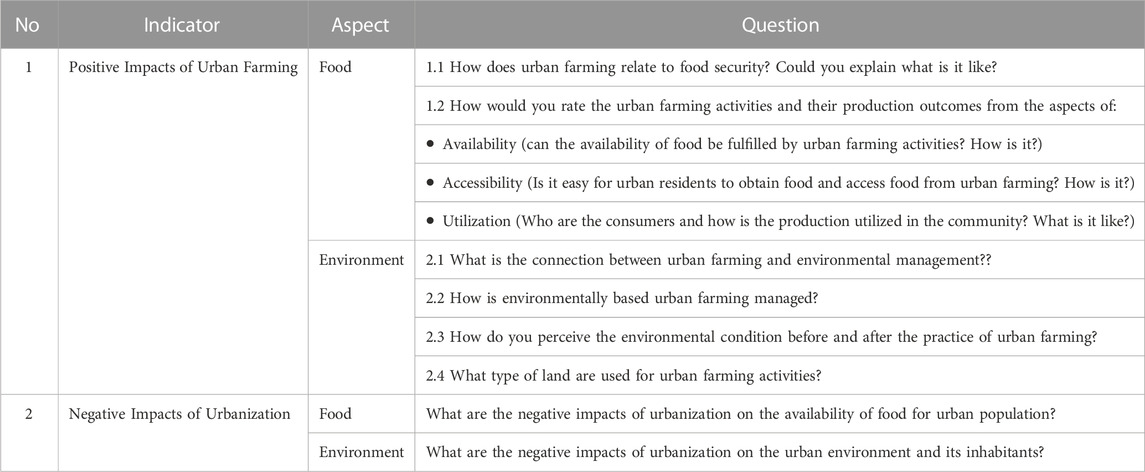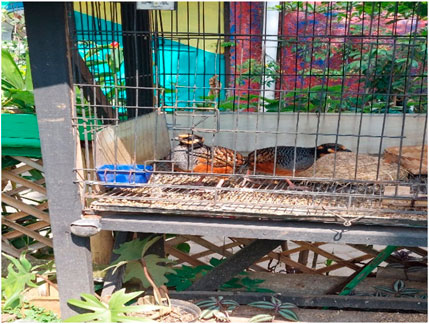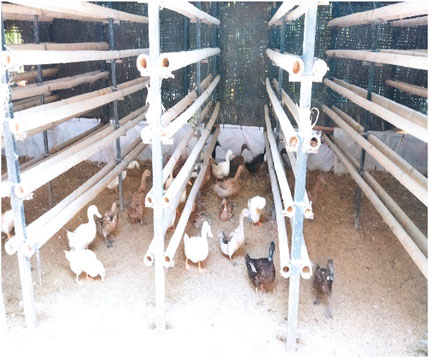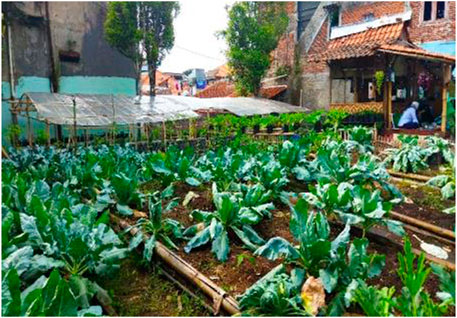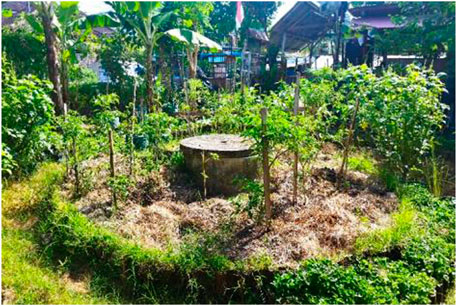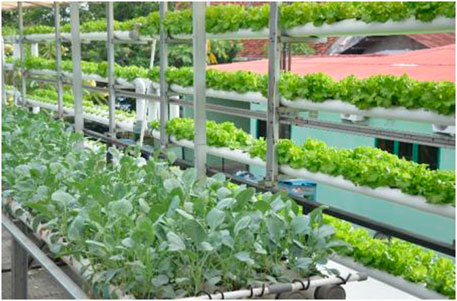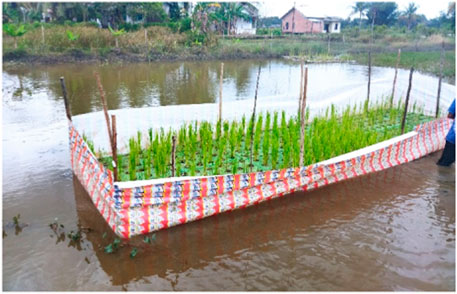- 1Faculty of Geography, Universitas Gadjah Mada, Yogyakarta, Indonesia
- 2Research Center for Population, Institute of Social Sciences and Humanities, National Research and Innovation Agency, Jakarta, Indonesia
- 3Research Center for Area Studies, Institute of Social Sciences and Humanities, National Research and Innovation Agency, Jakarta, Indonesia
- 4Faculty of Teaching and Education, Sriwijaya University, Palembang, Indonesia
Urbanization is the process of increasing the population migrating to urban areas, and urban farming is a farming practice carried out within the city. Both concepts have significant impacts on urban life and the environment. This research aims to analyze the interrelation of the positive impacts of urban farming and the negative impacts of urbanization. The analysis focuses on food and environmental aspects as alternative problem-solving methods in the cities of Bandung, Denpasar, and Palembang. This research uses qualitative method. Data collection uses field interview techniques with 30 informants, as well as a review of several scientific articles, previous research results, and reports from data-providing agencies such as the Indonesian Central Bureau of Statistics. Data analysis used the Miles and Huberman Model, with the stages of reduction, display, and conclusion drawing. The results of the analysis show that there is an interrelation between the positive impacts of urban farming and the negative impacts of urbanization in the cities of Bandung, Denpasar, and Palembang. In terms of food aspect, urban farming can provide various types of easily accessible food for urban dwellers, such as vegetables, fruits, fisheries, and small-scale livestock. The food produced is relatively close to residential areas, so the quality is still fresh and healthy and the price is affordable as well. In the environmental aspect, urban farming can optimize the use of limited or vacant land in residential areas into productive land, such as for green spaces, farming activities, gardening, fisheries, and livestock. Other functions include enhancing the beauty of the environment, reducing household waste, and preserving organism biodiversity.
1 Introduction
Based on population size, the continent of Asia is the most densely populated place in the world. However, the rate of population movement in this region remains relatively high, especially in urban areas (Akaeze and Nandwani, 2020). As a result, the number of cities and urban inhabitants continues to rise, with even suburban or rural areas transforming into cities (Adam, 2020). The movement of people to urban areas or the transformation of rural areas into cities is known as urbanization (Harahap, 2013). Indonesia is one of the Asian countries with a high level of urbanization. In 2022, the urbanization rate in Indonesia was 57.9 percent and is predicted to increase to 77.1 percent by 2045 (UN, 2018). This prediction is not significantly different from the calculations of the Indonesia’s Central Bureau Statistics (Badan Pusat Statistik—BPS), where in 2020, the urban population in Indonesia was 56.7 percent and is projected to reach 66.6 percent by 2035.
The high level of urbanization in Indonesia is closely linked to its driving and pulling factors. Generally, the driving and pulling factors of urbanization are related to developmental disparities within a region, in this case, between rural and urban areas. Noticeable differences in development levels between rural and urban areas are evident in various aspects, such as infrastructure, worker wages, educational facilities, healthcare services, sports facilities, recreation, and so forth. These disparities are considered to be driving and pulling factors that prompt migrants to undergo urbanization (Harahap, 2013; Hidayati, 2021). Furthermore, Harahap (2013) adds that there are three main underlying causes of high urbanization in Indonesia: 1) Macro-economic policies (1967–1980), which are believed to have concentrated economic development activities in a specific region (urban area). 2) A combination of policies involving import substitution and foreign investment in the manufacturing sector, leading to centralized development polarization on Java Island, especially Jakarta. 3) The extensive industrial distribution in urban areas and mechanization in the agricultural sector, causing rural youth to lose interest in farming and choose urbanization for non-agricultural work.
The high number of urban population has led to complex issues in various fields, such as health, security, economy, food, social matters, poverty, environment, urban aesthetics, and others (Indraprahasta and Agustina, 2012; Hidayati, 2021). One of the crucial issues that is the focus of this paper is the aspects of food and the environment. According to Malthus’ theory, population growth rate is faster than food production growth, leading to future “chaos” (Rusli, 2012). Although this theory is quite old, it is becoming increasingly relevant to the present situation, given the emergence of various problems related to hunger and poverty due to food crises.
Based on previous research findings, a significant portion of urban residents’ income is spent on purchasing food items (Suryandari, 2010; Indraprahasta and Agustina, 2012; Akaeze and Nandwani, 2020). The degradation of the urban environment due to population density and limited environmental capacity intensifies the threat of food crises in urban areas. The conversion of agricultural land into non-agricultural uses such as roads, housing, industries, and office complexes (Andrade et al., 2022) further restricts food production. As a result, food items become scarce and expensive. Moreover, uncontrolled urbanization also brings concerning impacts on the overall livelihoods of rural communities, even worsening the conditions of farmers’ lives (Tadesse and Imana, 2017) due to reduced income.
The study by Wang (2021) demonstrates that urbanization poses a threat to food security due to the reduction in available agricultural land. Yoshida (2020) adds that urban expansion has both negative and positive effects on peri-urban farming. The article also highlights that urban farming serves multiple functions. Alongside its role in food production, it also serves aesthetic and recreational purposes, contributes to natural conservation and hydrological balance, and includes the development of peri-urban agriculture, which encompasses cultural landscapes, recreation, local food supply, and environmental quality preservation. This multifunctionality has drawn global attention from urban planners and researchers. Various issues can be developed from urban farming, such as production challenges, energy conservation, waste management, biodiversity, microclimate control, urban greening, economic revitalization, and so on.
It cannot be denied that the high demand for food in urban areas has led to traditional rural agricultural systems being unable to meet the food needs in urban centers (Argañaraz and Gleiser, 2017). Consequently, there are several regions that still lack food supply and have low Food Security Index (FSI) scores. Based on the 2021 FSI results, there are still 70 districts and 5 cities in Indonesia with low FSI scores (BKP, 2021). This indicates that Indonesia still needs to work hard to achieve the SDGs goal of eradicating poverty and hunger (SDGs, 2017). Apart from limited production, the high cost of food in urban areas is also attributed to expensive transportation and preservation (cooling) of food items. This is because the food sources for urban residents are often brought in from distant areas such as rural regions. This situation significantly affects the economy of lower-to middle-class urban families, creating to poverty and hunger (Suryandari, 2010; Akaeze and Nandwani, 2020).
This paper aims to analyze the interrelation between urban farming activities and urbanization when integrated into the design of an Urban Farming for Urbanization (UFU) integration model to address food and environmental problems in urban areas due to the impacts of urbanization. The study focuses on the positive impacts of urban farming activities and the negative impacts of urbanization. The research aims to identify and analyze the interrelation of the positive impacts of urban farming in minimizing the negative impacts of urbanization on food and environmental aspects.
In developing countries like Indonesia, urban farming is often perceived as a survival strategy for urban poor populations (Kuusaana and Eledi, 2015). Why is urban farming linked to urbanization? This is because urban farming is the result of rural immigrant individuals internalizing practices, having detached themselves from their rural origins’ ties to live in urban areas. Thus, urban farming represents an integration between the agricultural skills or culture of rural immigrants and the urban environment or system (Suryandari, 2010). Additionally, according to Sukamdi (2019), research or discussions on the connection between food security, the environment, and urbanization in Indonesia are important aspects that have been rarely addressed, so it needs to be discussed continuously.
The study of urban farming and urbanization is also interesting to discuss, particularly in relation to agricultural diversification initiatives by migrants, migrant food security, and environmentally friendly farming practices. The results of this study are expected to address the “gap” in the relationship between agricultural diversification and urbanization that, in some studies, has been indicated as unclear (Yoshida, 2020). These considerations are examined through various literature, previous studies, and successful practices concerning the implications of urban farming activities in anticipating several negative impacts of urbanization in Indonesia. This is where the novelty of this research lies.
2 Research method
This article uses a qualitative method with primary data sources derived from field interviews and field observations. Secondary data were obtained from literature reviews, previous studies, and data-providing institutions such as the Indonesian Central Bureau of Statistics Agency. The research was conducted from February to March 2023 in three cities in Indonesia: Bandung, Denpasar, and Palembang. The collection of primary data was conducted through interview methods with informants, with the criteria that the informants were practitioners of urban farming. The informants totaled 30 individuals distributed in Bandung (10 individuals), Denpasar (10 individuals), and Palembang (10 individuals). The majority of urban farming practitioners were part of households that were permanent residents or long-term settlers in the research location, at least for 1 year. The average age of urban farming practitioners in the cities of Bandung, Denpasar, and Palembang ranged from 30 to 50 years, with the majority are male residents. The educational background of most urban farming practitioners was predominantly middle to upper class, and a significant portion of them were working in companies or factories.
Urban farming activities are carried out as a side job to fill leisure time and make use of the existing environment or land. The questions used to gather information about the positive impacts of urban farming and the negative impacts of urbanization on food and the environment include several items as outlined in Table 1. In addition to the impacts on food and the environment aspects, urban farming and urbanization certainly have an impact on other aspects such as economy, social, health, and culture. However, this article specifically focuses on two aspects, namely, food and the environment, so other aspects are excluded, although they sometimes appear as brief additional information.
The secondary data used in this paper refers to journal articles on the topics of urban farming and urbanization during the period of 2018–2022. The qualitative data analysis tool used the Miles and Huberman Model, with the stages of data reduction, display, and conclusion drawing. This analysis emphasizes on description-explanation, by connecting primary data results, literature reviews, or previous research outcomes with on-field observations. Both can complement or contradict each other, following synthesis and in-depth examination. The data analysis is based on field findings and previous research results from several relevant articles on the interrelation of urban farming and urbanization.
3 Finding and discussion
3.1 The interrelation of the positive impact of urban farming and the negative impact of urbanization
Based on the Chief of BPS Regulation Number 120 of 2020 regarding the Classification of Urban and Rural Villages in Indonesia, there has been a 14.84 percent increase in the number of urban areas during the period of 2010–2020. According to Suntajaya (2012) and Hidayati (2021), one of the main reasons is the migration of people from rural to urban areas. Limited job opportunities, low land ownership in rural areas, and poverty drive rural populations to migrate (Suntajaya, 2012; Farraz and Fathiah, 2021). The rural-to-urban migration ultimately creates urbanization, leading to a surge in urban population. In terms of food and the environment, uncontrolled urbanization can result in several negative impacts such as food crises, rising food prices, the emergence of slums, reduction in agricultural land, pollution, natural disasters, traffic congestion, environmental pollution, floods, and damage to urban planning (Suntajaya, 2012; Harahap, 2013; Swain and Teufel, 2017; Graefe et al., 2019; Widita and Diwangkari, 2022; Wiratenaya et al., 2022).
To address this issue, various efforts have been made, one of which is through urban farming activities. Urban farming is an activity aimed at facilitating and producing food for the urban population, which is increasing in number. Urban farming can take the form of farming, livestock raising, gardening, or an integration of all three. Based on field findings, the majority of urban farming practitioners in Bandung, Denpasar, and Palembang integrate all three but on a limited scale due to limited land availability. Despite numerous studies on urban farming and urbanization, there have not been many studies examining the interrelation between urban farming and urbanization. However, in various aspects, urban farming activities have a high correlation with urbanization, particularly in the aspects of food and the environment. Based on the analysis of field interviews with urban farming practitioners in Bandung, Denpasar, and Palembang, it is evident that the positive impact of urban farming is interconnected with the negative impact of urbanization in terms of food and the environment.
Based on the analysis of field interview data from urban farming practitioners in Palembang, Bandung, and Denpasar, there is an interrelation between the positive impacts of urban farming and the negative impacts of urbanization on food and environmental aspects (see Table 2). Several supporting pieces of evidence are explained in the descriptions below.
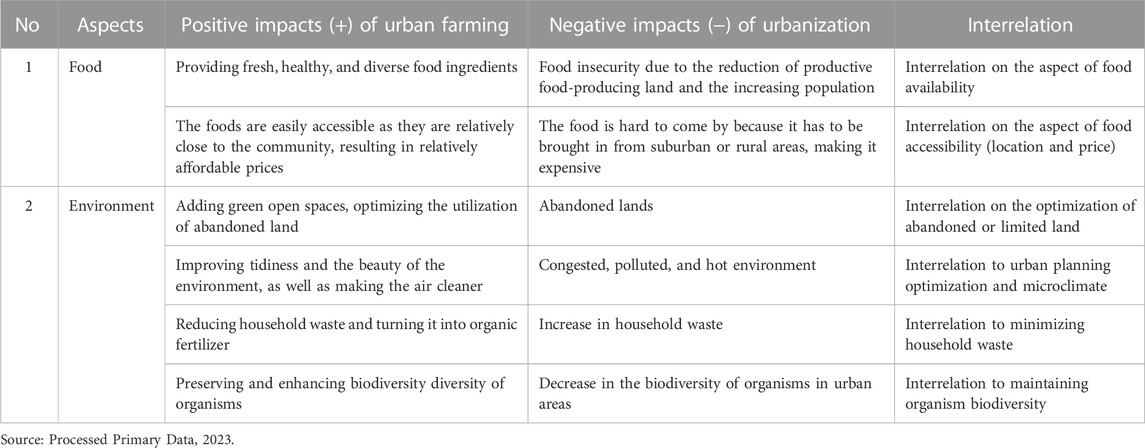
TABLE 2. Interrelation of the positive impacts of urban farming and the negative impacts of urbanization.
Food aspect
Urban farming is a way to produce food locally within the city. This can help reduce dependency on food supplies from outside the city and address food security issues due to urbanization In the case of Bandung City, 96 percent of the food supplies for the residents are sourced from outside the Bandung area. This leads to higher food prices and a decrease in quality due to deterioration during transportation. Therefore, the Bandung City government is attempting to address the limitation in providing urban food supplies by implementing an urban farming program called “Buruan Sae.” This program involves farming in home yards, gardens, or unused land in the local area. Urban farming activities practically have a positive impact on the practitioners, which aligns with what urban farming practitioners in Bandung mentioned when asked about the impact of urban farming activities on household food provision and the types of plants involved, as expressed below
“The results of urban farming activities greatly help fulfill daily needs. I can easily obtain various food items such as vegetables, fruits, fish, eggs, and more” (Fj_02-2023).
“I can easily obtain various types of food from my garden. I have some imported vegetables such as lettuce, broccoli, and cabbage. There are also onions, lettuce, bok choy, and others” (Gl_04-2023).
Based on the statements from the two informants above, urban farming provides convenience in obtaining various types of food needed by households. Not only local plant varieties, but some urban farming practitioners in the city of Bandung also grow several types of imported plants for their consumption. Based on our field observations of several urban farming practitioners in the city of Bandung, the majority of urban farming is integrated with fishing and livestock activities. Various types of fish are cultivated, such as tilapia, catfish, and catfish (Figure 1). Additionally, we also found some urban farming practitioners integrating with livestock farming, such as ducks and chickens, as well as quails (Figures 2, 3).
In general, the findings in the city of Bandung are not much different from those in the city of Denpasar. The majority of urban farming is integrated with fisheries and livestock. Despite Denpasar being known as a service and tourism city due to its location in Bali Province, the enthusiasm of the residents for engaging in urban farming activities is relatively high. In fact, Denpasar, the capital of Bali Province successfully achieved the Best National Food Security Index Award in 2022 with a score of 91.82. From a food perspective, urban farming has proven to provide a positive contribution to the population of Denpasar. In addition to food, urban farming in Denpasar is also designated for cultivating various types of plants, with their yields processed into various processed products (Figure 4).
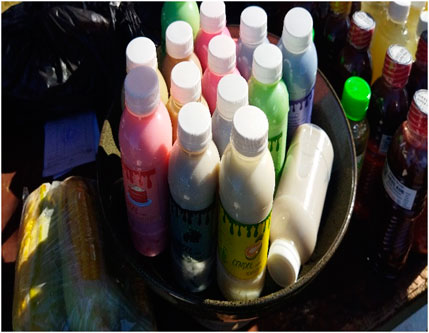
FIGURE 4. Beverages made from fruits produced in urban farming. Source: Researcher documentation, 2023.
“Besides producing vegetables and fruit plants, my garden also produces several medicinal plants. I previously participated in training on processing medicinal plants, such as herbal remedies for cholesterol and uric acid. The results are both for personal consumption and for sale” (Wy_01-2023).
“The yield from my garden includes several types of plants, such as Brazilian spinach, red spinach, tomatoes, white turmeric, eggplants, chili peppers, and corn. Some of these plants are used to make herbal remedies, like a concoction made from betel leaves and honey. It can be consumed by postpartum mothers” (As_02-2023).
Furthermore, urban farming activities in the city of Palembang also have a more or less similar impact on the food aspect. Many urban farming activities are integrated with fisheries and livestock. Based on field findings, one of the urban farming practitioners encountered established a honeybee farm on their land (Figure 5). The honeybee farm is integrated with plantation crops such as langsat trees, durian trees, and rambutan trees. In between, there are also various vegetables planted such as water spinach, eggplant, and spinach. Additionally, some decorative flowering plants are present. The abundance of plant varieties will influence the honey production by the bees.
Based on field findings from urban farming practitioners in the cities of Bandung, Denpasar, and Palembang, it shows that urban farming activities have a profoundly positive impact on household food provision, communities, and their environments. Urban farming can produce locally sourced food, reducing the need for long-distance transportation and the use of agricultural chemicals. Various types of food can be produced through urban farming, encompassing both plant-based and animal-based food. The majority of urban farming activities have been integrated with various sectors, including agriculture, horticulture, aquaculture, livestock farming, and waste management. The ability of urban farming to provide food for the residents of Bandung, Denpasar, and Palembang signifies that it can serve as an alternative solution to address the negative impacts of urbanization on the food aspect. Food insecurity feared by urban residents due to the continuous rise of urbanization can be minimized by encouraging urban dwellers to engage in urban farming activities, especially concerning availability and accessibility aspects.
Not only in the cities of Bandung, Denpasar, and Palembang, but based on previous research findings, several cities in Indonesia have also utilized urban farming to address food issues, as seen in Semarang. Urban farming has been prioritized in urban development to support food security programs (Handayani et al., 2018). In terms of production, urban farming in Semarang has shown promising results, with the growth of various food varieties such as vegetables, sugarcane, cassava, durian, and mushrooms. These research findings align with the study by Mastuti et al. (2021), which revealed that urban farming significantly contributes to household food security. Moreover, Santoso and Widya (2014) in Fauzi et al., 2016 highlighted that urban farming activities serve as an alternative solution to enhance food security in urban households, especially among low-income households.
In cases from other countries, urban farming has also had a significant positive impact on the food aspect. In a study by Diana Lee and Davinder (2015) cited from Wiratenaya et al. (2022), urban farming was found to support the health and nutrition of low-income families in Africa by providing fresh agricultural products in Dar-es-Salaam, Tanzania. Urban farming supplied 90 percent of vegetables and over 60 percent of milk, offering fresh local food to urban residents (Grebitus et al., 2020). Urban farming has shown its ability to address the issue of access to nutritious and healthy food for urban poor, considering aspects of distance, price, and preferences (Dwiartama et al., 2022), as it reduces the transportation time in the food supply chain. Urban farming with vertical design “Sky Green” in Singapore was able to produce various vegetables such as lettuce and cabbage all year round. From these cases, there are indicators showing that urban farming can provide organic and fresh food, thus considered capable of supplying healthy food for urban populations (Handayani et al., 2018). This information is consistent with what was conveyed by the Ministry of Environment and Forestry of the Republic of Indonesia in 2018, stating that urban farming helps provide fresher food for urban residents.
Environmental aspect
Urbanization leads to a reduction in productive urban land used for agriculture due to infrastructure development and housing. The emergence of urban farming allows the utilization of available land within the city, such as houseyards, building rooftops, or vacant land, for farming activities. This enables the optimal use of available land within the city and helps maintain green spaces amidst dense urban environments. Urbanization can have negative impacts on the environment, such as air pollution, waste, and a decline in water quality. The presence of urban farming can help reduce these negative impacts, such as purifying the air and water in urban areas, enhancing the quality of urban life by creating green spaces, and reducing stress.
Based on field observations in the cities of Bandung, Denpasar, and Palembang, urban farming activities have a profoundly positive impact on the environment. This includes adding green open spaces, enhancing the beauty of the environment, providing recreational opportunities, contributing to mental health therapy, supplying fresh air to the surroundings, improving land productivity, reducing household waste, and preserving biodiversity of organisms in Bandung, Denpasar, and Palembang. These findings align with the information provided by the informants when asked about the impact of urban farming activities on the environment, as follows:
“I have a vacant space behind my house, so instead of letting it go to waste, I’d rather plant something there. The air around the house is fresher, and I can relax while observing and tending to the plants and various types of fish there” (Am_01-2023).
“The environment is much more beautiful and tidy” (Ri_03-2023)
“The land initially served as a household waste disposal site, making it odorous and dirty. Myself and a few friends took the initiative to transform the land into something more productive through urban farming activities. We utilized household waste as organic fertilizer for the plants. We collaborated with several households to separate organic and non-organic waste from their homes” (Kp_06-2023).
Based on the information from the informant above, urban farming activities serve as an alternative solution for the residents of Bandung, Denpasar, and Palembang to utilize the land they have. Field findings show that residents in Bandung, Denpasar, and Palembang use various methods for urban farming, ranging from conventional gardening systems to those utilizing simple technological tools. In the case of Bandung, the majority of urban farming is carried out by using vacant land in houseyards or the surrounding environment using conventional systems (Figure 6). The use of soil as a growing medium is a key aspect for urban farming practitioners in Bandung. According to urban farming practitioners in Bandung, as long as accessible land is available, planting in soil is preferred. This finding is consistent with the field findings in Denpasar. Most urban farming activities in Denpasar also follow a conventional system, utilizing vacant land in houseyards or the surrounding environment. Soil remains a crucial growing medium for urban farming activities in Denpasar (Figure 7). However, we also found that a few urban farming practitioners in Bandung and Denpasar utilize alternative mediums such as using recycled materials, hydroponics, aquaponics, and vertical gardens, although the numbers are limited.
Different findings were found in Palembang. In the case of Palembang, the majority of urban farming practitioners utilize hydroponic systems for their urban farming activities. Additionally, there are floating rice plants cultivated in marshy ponds. The use of these mediums is due to Palembang being a marshy area with high soil acidity, making it challenging for all types of plants to thrive. As an alternative solution, urban farming practitioners use hydroponics and floating rice plants (Figures 8, 9). According to Handayani et al. (2018), based on land utilization, urban farming activities can be classified into two types: 1) Conventional urban farming, usually found in suburban areas with relatively large plots of land, also known as peri-urban farming (Filippini et al., 2018); 2) Limited land farming, typically utilizing simple technologies like hydroponics or aquaponics and conducted in relatively narrow areas such as residential yards or backyards in urban areas.
Referring to the field observations, the findings in Bandung, Denpasar, and Palembang are relatively similar. Generally, urban farming activities using relatively large land areas are situated in the outskirts of Bandung, Denpasar, and Palembang. However, in densely populated residential areas or city centers with limited land, a greater variety of mediums are used, such as hydroponics, aquaponics, polybags, vertical gardens, and rooftop gardening. Nevertheless, based on previous research in Yogyakarta, to support the sustainability of household-scale urban farming activities with limited land, technological support is crucial in its implementation (Andiani et al., 2021).
Another finding is that urban farming can also become a habitat for the survival of organisms in urban areas. Based on field observations, various organisms were found living in urban farming gardens managed by urban residents, such as butterflies, beetles, birds, dragonflies, bees, and so on. The field findings from Bandung, Denpasar, and Palembang are practically consistent with several previous research results. According to Handayani et al. (2018), urban farming activities carried out by urban residents can add green open spaces in urban areas and help reduce pollution. Moreover, urban farming activities have successfully transformed narrow and abandoned land in urban areas into productive land (Akaeze and Nandwani, 2020), such as school grounds, vacant building plots, rooftops, residential yards, and gardens (Mabon et al., 2022). According to the Ministry of Environment and Forestry (KLHK), urban farming can also address waste issues in urban areas through reuse and recycle methods, contributing to creating a clean and comfortable urban environment (KLHK, 2018).
These findings are also relevant to a study conducted by Wiratenaya et al. (2022), stating that urban farming can be an alternative solution for utilizing green open spaces and managing household waste in urban areas. Urban farming can also enhance the effectiveness of using household yards in urban areas. The utilization of household yards in urban areas can be adjusted based on land size, space usage, and vegetation selection (Irwan and Sarwadi, 2015). Additionally, urban farming activities combined with technology can make use of limited land not only horizontally but also vertically, as seen in Yogyakarta and Bandung (Wijaya et al, 2020). This design was tested in the Sky Greens concept, featuring hydraulic-based vertical urban farming design that proved to be efficient, environmentally friendly, low carbon, and capable of reducing the energy and land required compared to traditional farming techniques (Akaeze and Nandwani, 2020). Thus, indirectly, urban farming is seen to reduce heat in urban areas and enhance biodiversity and environmental regeneration (Sanyé-Mengual et al, 2016). Moreover, in another aspect, urban farming is considered to maintain mental health through the availability of accessible green open spaces and social resilience through community gardening activities (Mabon et al., 2022).
Based on the analysis of field data, several articles, and information about urban farming and urbanization above, interrelations can be drawn between the positive impacts of urban farming and the negative impacts of urbanization based on food and environmental aspects. Meanwhile, interrelations that do not fall into the categories of food and environment are grouped under other aspect indicators. Generally, the interrelation between the positive impacts of urban farming and the negative impacts of urbanization on the food aspect is evident from the ability of urban farming activities to meet the food needs of the increasingly dense urban population due to urbanization. Urban farming is seen to provide a healthy, fresh, and nutritious food alternative for urban residents because the access to it is relatively close. Urban farming activities can minimize urban residents’ issues in accessing food caused by factors such as distance, price, and preferences.
Meanwhile, in terms of the environmental aspect, the interrelation between the positive impacts of urban farming and the negative impacts of urbanization can be observed from the ability of urban farming to provide green open spaces in urban areas, enhance land utilization efficiency, and create a lush and fresh environment, among others. There is a potential for urban farming activities to revitalize ecological cycles in urban areas, but this requires sustained study and investigation. At the very least, this article serves as a starting point for considering that the integration of urban farming with urbanization is something worth considering, as it has interconnectedness and interrelationships across various aspects. Based on the research by Surya et al. (2020), it is shown that urban farming has an influence on the wellbeing of the population in slum settlements in Makassar city, with a percentage of 27.66%, strengthening community capacity (55.95%), and providing business capital support (36.72%). Moreover, their findings also added that urban farming activities have a positive effect on improving the welfare and self-sufficiency of the population in slum settlements.
3.2 Challenges and support needed by urban farming activists for sustainability
Urban farming has several advantages over traditional agricultural practices such as: 1) proximity to the market; 2) can be done on limited land; and 3) utilizes urban resources, such as organic and inorganic waste, as well as domestic waste. The challenges faced by urban farming practitioners in Bandung, Denpasar, and Palembang arise from the aspect of land. Land limitations force some urban farming practitioners to lease land. The relatively high cost of land rental makes urban farming practitioners opt for alternative businesses. Furthermore, the leasehold status lacks security of access, as the land can be used for other purposes at any time or relocated for different activities (Akaeze and Nandwani, 2020). Therefore, in this regard, government support is crucial, especially in providing land for urban farming activities. The sustainability of urban farming activities will highly depend on the perspectives of stakeholders and the policies issued (Sanyé-Mengual et al., 2016).
Urban farming practitioners in Bandung, Denpasar, and Palembang greatly anticipate the presence of communities, as through communities, urban farming practitioners can be facilitated with various training and relevant skills tailored to their needs, enabling progress in sustainable urban farming management. Challenges within the community arise from the aspect of collective identity. The involvement of members in a community is usually influenced by collective identity factors such as race, ethnicity, religion, gender, and language. Hence, effective negotiation is necessary among various parties to ensure that the existing community can adequately facilitate its members (Jonason, 2019).
Government support also determines the pace of urban farming development. Learning from the case in India, the Indian government supported urban farming activities by launching the “Pune City Corporation’s City Farming” program. The project aimed to facilitate urban residents in practicing vegetable cultivation and other plant-related businesses on provided land. Through similar programs, urban farming practitioners received assistance from the government, private sector, and individuals (Hallett et al., 2016). The Hong Kong government has incorporated urban farming activities into future urban planning efforts to meet the food needs of its urban population (Huang, 2021). It is hoped that various supportive government practices like these can be adopted by the Indonesian government, allowing urban farming activities to run sustainably.
In terms of law, land ownership status significantly affects the development and sustainability of urban farming programs in Bandung, Denpasar, and Palembang. If the land’s ownership and designated purpose are clear, urban farming practitioners feel more at ease and secure in managing urban farming. From a health perspective, some people believe that urban farming provides less healthy food due to the relatively polluted air and soil in urban areas, contaminated by heavy metals (Akaeze and Nandwani, 2020). Therefore, in-depth research is needed on the health aspect of urban farming production to gain a high level of trust from urban residents. The role of the internet and social media is crucial in supporting urban farming activities since through these platforms, networks and positive public spaces can be created for the socialization and promotion of urban farming activities (Bo’do et al., 2019). Additionally, other influencing factors such as production quantity, infrastructure, marketing, access to raw materials, finances, and technology are aspects that need to be considered by urban farming practitioners and the government as challenges for the sustainability of urban farming in the future.
4 Conclusion
There is an interrelation between the positive impact of urban farming and the negative impact of urbanization. This implies that urban farming activities can minimize the negative effects resulting from urbanization on both food and environmental aspects. In terms of food, urban farming has the potential to provide fresh, diverse, clean, healthy, adequate, and affordable food for urban residents. Concerning the environment, urbanization has the potential to increase green spaces, enhance the effective use of home gardens in urban areas, create a lush environment, maintain cleanliness and order, facilitate recycling of urban waste and litter, and preserve biodiversity in urban areas. However, given the differing conditions in each region or city, as well as varying cultures, the findings of this research cannot be generalized to every area. Therefore, the nature of these research findings is only an example of alternative problem-solving efforts related to urbanization through urban farming activities in Bandung, Denpasar, and Palembang.
Data availability statement
The original contributions presented in the study are included in the article/supplementary material, further inquiries can be directed to the corresponding author.
Author contributions
All authors listed have made a substantial, direct, and intellectual contribution to the work and approved it for publication.
Funding
The writer would like to express gratitude to the Education Fund Management Institute (LPDP) and the National Research and Innovation Agency (BRIN) for providing funding for this research activity under the Innovation Research for Advanced Indonesia (RIIM) Phase 2 scheme in the year 2022.
Conflict of interest
The authors declare that the research was conducted in the absence of any commercial or financial relationships that could be construed as a potential conflict of interest.
Publisher’s note
All claims expressed in this article are solely those of the authors and do not necessarily represent those of their affiliated organizations, or those of the publisher, the editors and the reviewers. Any product that may be evaluated in this article, or claim that may be made by its manufacturer, is not guaranteed or endorsed by the publisher.
References
Adam, A. G. (2020). Understanding competing and conflicting interests for peri-urban land in Ethiopia’s era of urbanization. Environ. Urbanization 32 (1), 55–68. doi:10.1177/0956247819890215
Akaeze, O., and Nandwani, D. (2020). Urban agriculture in Asia to meet the food production challenges of urbanization: a review. Urban Agric. Regional Food Syst. 5 (1), 1–7. doi:10.1002/uar2.20002
Andiani, R., Witjaksono, R., Sari, W. A., Mustika, E., Hernandu, H. D., Puspadjati, F. A., et al. (2021). The sustainability of vegetable urban farming in Yogyakarta City, Proceedings of 1st International Conference on Sustainable Agricultural Socio-Economics, Agribusiness, and Rural Development (ICSASARD 2021), Mar 18, 2022, China, 229234. Available at: https://www.atlantis-press.com/proceedings/icsasard-21/125966363. doi:10.2991/aebmr.k.211214.032
Andrade, J. F., Cassman, K. G., Rattalino Edreira, J. I., Agus, F., Bala, A., Deng, N., et al. (2022). Impact of urbanization trends on production of key staple crops. Ambio 51 (5), 1158–1167. doi:10.1007/s13280-021-01674-z
Argañaraz, C. I., and Gleiser, R. M. (2017). Does urbanization have positive or negative effects on crab spider (Araneae: thomisidae) diversity? Zoologia 34, 1–8. doi:10.3897/zoologia.34.e19987
Bkp, (2021). Indeks ketahanan pangan 2021. Available at: http://repository.pertanian.go.id/bitstream/handle/123456789/15396/IKP2021-ISBN.pdf?sequence=1&isAllowed=y.
Bo’do, S., Siahaan, H., and Ida, R. (2019). Social media, public space and movement discussion of urban farming in Indonesia. Budapest Int. Res. Critics Inst. (BIRCI-Journal) Humanit. Soc. Sci. 2 (3), 250–261. doi:10.33258/birci.v2i3.414
Diana Lee, S., and Davinder, L. (2015). “Nutrition and urban agriculture in Sub-Saharan African Cities,” in Right to Food and Nutrition.
Dwiartama, A., Kelly, M., and Dixon, J. (2022). Linking food security, food sovereignty and foodways in urban Southeast Asia: cases from Indonesia and Thailand. Food Secur. 15, 505–517. doi:10.1007/s12571-022-01340-6
Farraz, M. A., and Fathiah, A. (2021). Alat analisis strategi bertahan hidup sektor informal perkotaan selama pandemi covid-19: review literatur. J. Sosiol. Andalas 7 (1), 1–10. doi:10.25077/jsa.7.1.1-10.2021
Fauzi, A. R., Ichniarsyah, A. N., and Agustin, H. (2016). Pertanian perkotaan: urgensi, peranan, dan praktik baik. J. Agroteknologi 10 (01), 49–62. Available at: https://jurnal.unej.ac.id/index.php/JAGT/article/download/4339/3278/. doi:10.19184/j-agt.v10i01.4339
Filippini, R., Lardon, S., Bonari, E., and Marraccini, E. (2018). Unraveling the contribution of periurban farming systems to urban food security in developed countries. Agron. Sustain. Dev. 38 (2), 21. doi:10.1007/s13593-018-0499-1
Graefe, S., Buerkert, A., and Schlecht, E. (2019). Trends and gaps in scholarly literature on urban and peri-urban agriculture. Nutrient Cycl. Agroecosyst. 115 (2), 143–158. doi:10.1007/s10705-019-10018-z
Grebitus, C., Chenarides, L., Muenich, R., and Mahalov, A. (2020). Consumers’ perception of urban farming—an exploratory study. Front. Sustain. Food Syst. 0, 79. doi:10.3389/FSUFS.2020.00079
Hallett, S., Hoagland, L., and Toner, E. (2016). Urban agriculture: environmental, economic, and social perspectives. Hortic. Rev. 44, 65–120. doi:10.1002/9781119281269.ch2
Handayani, W., Nugroho, P., and Hapsari, D. O. (2018). Kajian potensi pengembangan pertanian perkotaan di kota semarang. Riptek I (2), 55–68. Available at: https://riptek.semarangkota.go.id/index.php/riptek/article/view/10/10. doi:10.35475/riptek.v12i2.10
Harahap, F. R. (2013). Dampak Urbanisasi bagi Perkembangan Kota di Indonesia. J. Soc. 1 (1), 35–45. doi:10.33019/society.v1i1.40
Hidayati, I. (2021). Urbanisasi dan dampak sosial di Kota besar: sebuah tinjauan. J. Ilm. Ilmu Sosial. 7 (2), 212. doi:10.23887/jiis.v7i2.40517
Huang, S. M. (2021). Urban farming as a transformative planning practice: the contested new territories in Hong Kong. J. Plan. Educ. Res. 41 (1), 32–47. doi:10.1177/0739456X18772084
Indraprahasta, G. S., and Agustina, I. (2012). Urban agriculture activity and its potentials to eradicate urban poverty in Jakarta. Tataloka 14 (3), 186–200. doi:10.14710/tataloka.14.3.186-200
Irwan, S. N. R., and Sarwadi, A. (2015). Lanskap pekarangan produktif di Permukiman perkotaan dalam mewujudkan lingkungan binaan berkelanjutan. Semin. Nas. Sains Dan. Teknol. Available at: https://media.neliti.com/media/publications/172488-ID-lanskap-pekarangan-produktif-di-permukim.pdf.
Jonason, A. (2019). Defining, aligning, and negotiating futures: new forms of identity work in an urban farming project. Sociol. Perspect. 62 (5), 691–708. doi:10.1177/0731121419845894
KLHK (2018). Pedoman pelaksanaan pertanian perkotaan (urban farming) edisi januari 2018. Available at: http://p3esumatera.menlhk.go.id/p3es/uploads/unduhan/12._Pedoman_Urban_Farming.pdf.
Kuusaana, E. D., and Eledi, J. A. (2015). As the city grows, where do the farmers go? Understanding Peri-urbanization and food systems in Ghana - evidence from the Tamale Metropolis. Urban Forum 26, 443–465. doi:10.1007/s12132-015-9260-x
Mabon, L., Shih, W. Y., and Jou, S. C. (2022). Integration of knowledge systems in urban farming initiatives: insight from Taipei Garden City. Sustain. Sci. 18, 857–875. doi:10.1007/s11625-022-01196-x
Mastuti, R., Umin, M., Tumangger, I. A., and Sinaga, M. S. (2021). Urban farming sebagai strategi ketahanan pangan keluarga dimasa new normal. Bunga rampai karya ilmiah bertema covid-19 di bidang pertanian. Available at: https://ejurnalunsam.id/index.php/psn/article/view/3327.
Santoso, E. B., and Widya, R. R. (2014). “Urban farming movement in supporting community self-sufficiency in Surabaya City,” in Paper presented at the National Seminar on Cities.
Sanyé-Mengual, E., Anguelovski, I., Oliver-Solà, J., Montero, J. I., and Rieradevall, J. (2016). Resolving differing stakeholder perceptions of urban rooftop farming in Mediterranean cities: promoting food production as a driver for innovative forms of urban agriculture. Agric. Hum. Values 33 (1), 101–120. doi:10.1007/s10460-015-9594-y
Sdgs, (2017). Sustainable development goals. Available at: https://www.sdg2030indonesia.org/.
Sukamdi, S. (2019). Mobilitas penduduk, kemiskinan, dan ketahanan pangan di Daerah bencana: kasus desa timbulsloko, kecamatan sayung, kabupaten demak, provinsi jawa tengah. Populasi 27 (1), 52–72. doi:10.22146/JP.49602
Suntajaya, I. G. K. (2012). Faktor-faktor yang mempengaruhi terjadinya urbanisasi di Provinsi Bali. Piramida X (2), 61–70.
Surya, B., Syafri, S., Hadijah, H., Baharuddin, B., Fitriyah, A. T., and Sakti, H. H. (2020). Management of slum-based urban farming and economic empowerment of the community of Makassar City, South Sulawesi, Indonesia. Sustain. Switz. 12 (18), 7324. doi:10.3390/SU12187324
Suryandari, R. Y. (2010). Pengembangan pertanian perkotaan impian mewujudkan kota yang berkelanjutan. J. PLANESA 1 (November), 106–113. Available at: https://media.neliti.com/media/publications/212980-pengembangan-pertanian-perkotaan-impian.pdf.
Swain, B. B., and Teufel, N. (2017). The impact of urbanisation on crop–livestock farming system: a comparative case study of India and Bangladesh. J. Soc. Econ. Dev. 19 (1), 161–180. doi:10.1007/s40847-017-0038-y
Tadesse, E., and Imana, G. (2017). Prospects and challenges of urbanization on the livelihood of farming community surrounding finfinne. Am. Res. J. Humanit. Soc. Sci. ISSN (Online) Volume 3, 2378–7031.
Wang, S. dkk, Bai, X., Zhang, X., Reis, S., Chen, D., Xu, J., et al. (2021). Urbanization can benefit agricultural production with large-scale farming in China. Nat. Food 2, 183–191. doi:10.1038/s43016-021-00228-6
Widita, A., and Diwangkari, A. (2022). How disruptive is a disruption? The association between TNCs and vehicle ownership in urbanizing Indonesia. Case Stud. Transp. Policy 10 (1), 572–580. doi:10.1016/J.CSTP.2022.01.017
Wijaya, K., Permana, A. Y., Hidayat, S., and Wibowo, H. (2020). Pemanfaatan urban farming melalui konsep eco-village di kampung paralon bojongsoang kabupaten Bandung. J. Arsit. ARCADE 4 (1), 16. doi:10.31848/arcade.v4i1.354
Wiratenaya, P. A., Yuliarmi, N. N., and Udayana, U. (2022). Strategi peningkatan mutu pertanian perkotaan untuk ketahanan pangan di Provinsi Bali. J. Penjaminan Mutu 8 (1), 1–6. doi:10.25078/jpm.v8i1.756
Keywords: urbanization, urban farming, foods, environment, urban
Citation: Giyarsih SR, Armansyah , Zaelany AA, Latifa A, Setiawan B, Saputra D, Haqi M, Lamijo and Fathurohman A (2024) Interrelation of urban farming and urbanization: an alternative solution to urban food and environmental problems due to urbanization in Indonesia. Front. Built Environ. 9:1192130. doi: 10.3389/fbuil.2023.1192130
Received: 23 March 2023; Accepted: 11 December 2023;
Published: 03 January 2024.
Edited by:
Izuru Takewaki, Kyoto Arts and Crafts University, JapanReviewed by:
Pablo Torres-Lima, Metropolitan Autonomous University, MexicoMichael Buxton, RMIT University, Australia
Copyright © 2024 Giyarsih, Armansyah, Zaelany, Latifa, Setiawan, Saputra, Haqi, Lamijo and Fathurohman. This is an open-access article distributed under the terms of the Creative Commons Attribution License (CC BY). The use, distribution or reproduction in other forums is permitted, provided the original author(s) and the copyright owner(s) are credited and that the original publication in this journal is cited, in accordance with accepted academic practice. No use, distribution or reproduction is permitted which does not comply with these terms.
*Correspondence: Sri Rum Giyarsih, c3JpcnVtQHVnbS5hYy5pZA==
 Sri Rum Giyarsih
Sri Rum Giyarsih Armansyah
Armansyah Andy Ahmad Zaelany
Andy Ahmad Zaelany Ade Latifa
Ade Latifa Bayu Setiawan
Bayu Setiawan Dani Saputra
Dani Saputra Muamar Haqi
Muamar Haqi Lamijo
Lamijo Apit Fathurohman
Apit Fathurohman